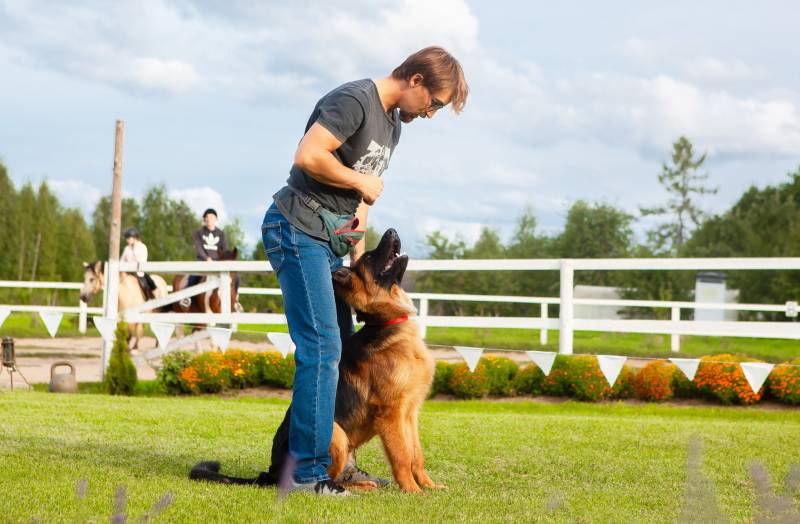There are a plethora of dog breeds out there that are working dogs, but do you know exactly what each type of working dog does? Each working type has specific jobs they’re best at, whether that’s herding farm animals or sniffing out bombs. Each breed is also utilized according to different things, such as their intellect or size. The jobs a breed excels at are something you absolutely want to know before getting a working dog.
If you’ve been considering investing in a working dog to help you at home or work, you’ll want to have the information below, as we’re covering 10 types of working dogs and all the specific jobs they can do. Knowing this means you’ll find the best dog for the job!
The 10 Types of Working Dogs & Their Jobs
1. Service Dogs
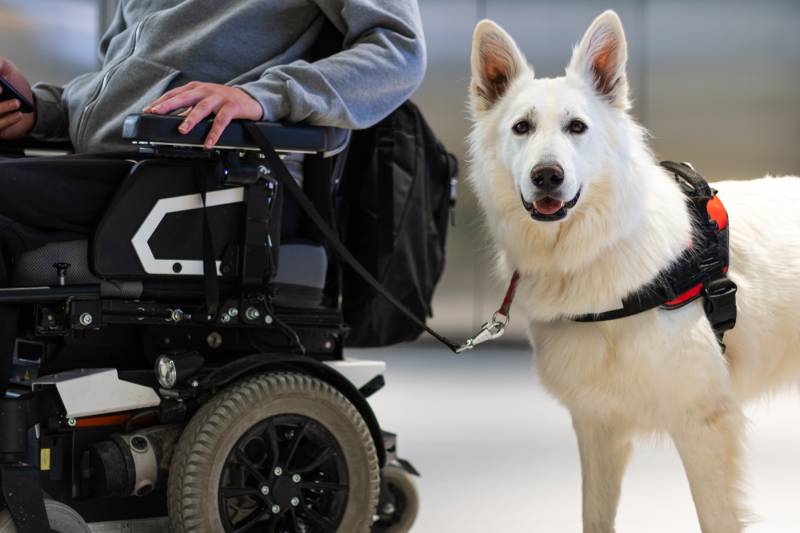
Service dogs are probably the most commonly known working dogs. The Americans with Disabilities Act (ADA) says service dogs are those that “…must perform a task specific to a person’s disability which can be physical, sensory, psychiatric, intellectual, or other mental disability.”
So, service dogs are those dogs that have been trained to do specific jobs for those with disabilities. Service dogs are allowed to be in public spaces where dogs normally aren’t allowed so they can aid their humans.
- Acting as guides for those with visual or hearing impairments
- Aiding those with mobility issues
- Working with children with autism
- Alerting people about seizures or cardiac events that are about to occur
2. Therapy Dogs
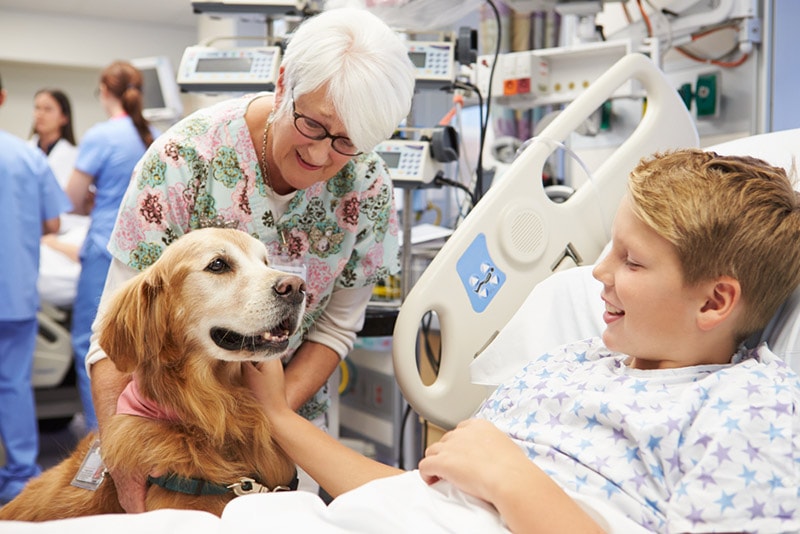
Therapy dogs are not service dogs; that’s important to know. Instead of assisting those with disabilities, therapy dogs provide comfort, affection, and emotional support to those in difficult situations. These dogs may be certified as therapy dogs, or they might simply be well-behaved, loving dogs.
Not all dog breeds will excel at being therapy dogs, though, as these pups require an even temperament and major socialization training.
- Hospitals
- Nursing homes
- Doctor/dentist offices
- Schools
- Hospice
- Disaster areas
- French Bulldog
- Yorkshire Terrier
- Pomeranian
- Golden Retriever
3. Emotional Support Dogs
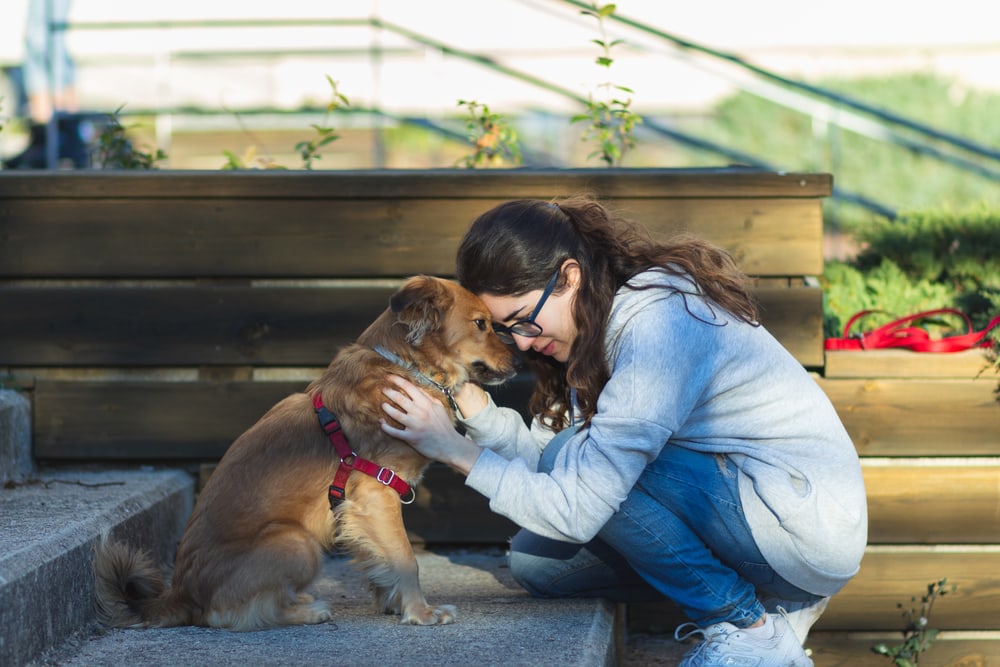
What’s the difference between an emotional support dog and a therapy dog? Well, emotional support dogs are technically pets and must be prescribed by a licensed mental health professional. And while therapy dogs provide comfort to many people, an emotional support dog is more of a personal comfort.
Most emotional support dogs (and other animals) are pets of those dealing with depression, anxiety, PTSD, and other mental health issues. While dogs offering emotional support don’t need any, they do need to be calm, devoted to their human, able and willing to obey commands, and capable of responding to their human’s emotional state.
Staying by their human’s side is the emotional support dog’s job. Unfortunately, emotional support animals aren’t covered under the ADA, so if you have a pup doing this job, it means it can’t go everywhere with you.
- Labrador Retrievers
- Pugs
- Cavalier King Charles’ Spaniels
- Corgis
4. Police Dogs
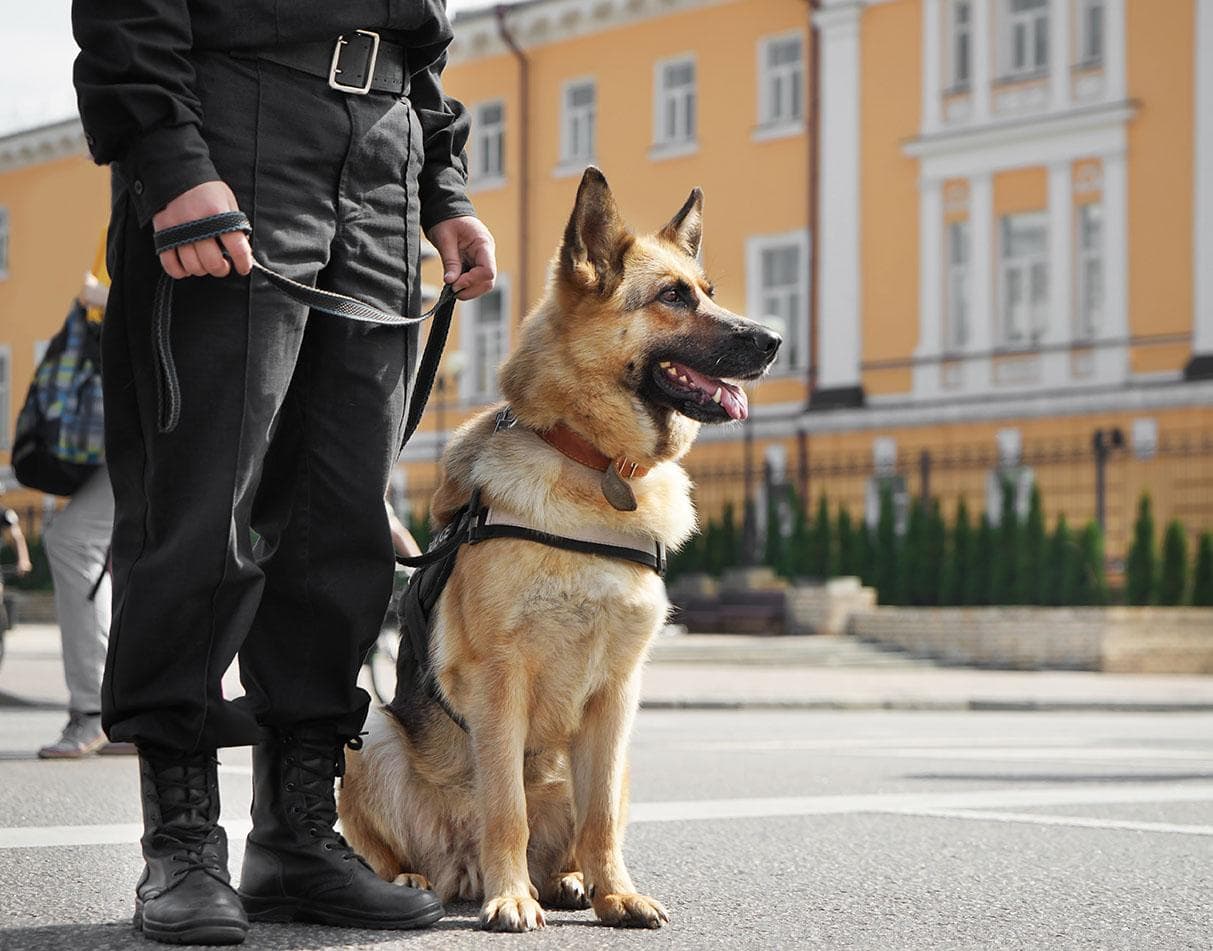
Police dogs, or K-9s, are another commonly recognized working dog. These dogs are specifically trained to help out with law enforcement and do many types of jobs for police.
- Protecting their handlers
- Apprehending suspects
- Working as detection dogs (sniffing out drugs and more)
- Rescuing victims
- Labrador Retrievers
5. Military Dogs
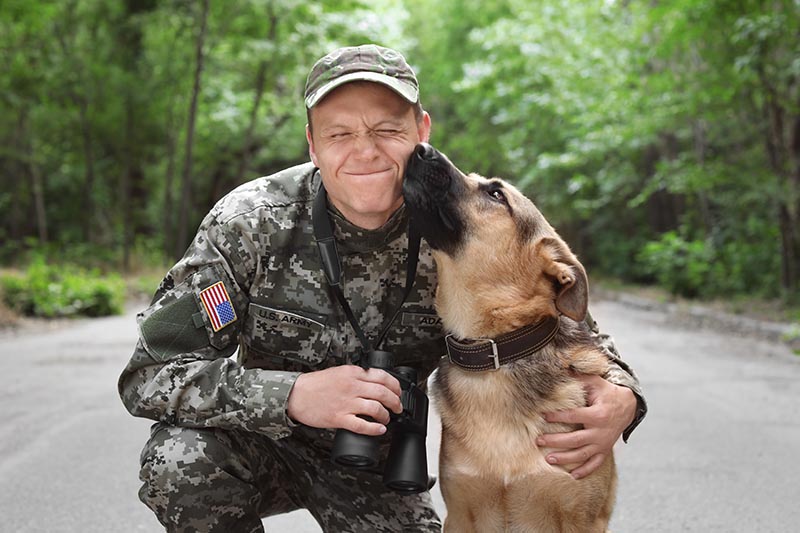
Dogs working in the military are quite similar to police dogs in that they are trained not only to do regular jobs, such as patrolling but also to do specific jobs, like detection. These pups help out military personnel in their operations.
- Tracking
- Guarding
- Scouting
- Search and rescue
- Patrolling
- Securing bases
- Attacking on command
- Detecting bombs or weapons
Plus, some dogs working with the Navy SEALS are actually trained to be parachutists!
- Belgian Malinois
- Dutch Shepherd
- German Shepherd
- Labrador Retriever
6. Guard Dogs

You probably imagine a larger dog breed fiercely protecting its owner’s home when you think of guard dogs. And you’re correct, as this is the job of a guard dog to protect its home and owners from intruders (though guard dogs don’t necessarily have to be huge).
Guard dogs also protect other places, though, such as workplaces and properties outside the home. But not all breeds make suitable guard dogs, whether they’re guarding a home, work, or elsewhere.
- Doberman Pinschers
- Rottweilers
- German Shepherds
7. Search-and-Rescue Dogs

Search-and-rescue dogs (SAR) do exactly what the name suggests—they search out and rescue! These pups are amazingly agile and have an incredible sense of smell and hearing. These dogs are highly trained to work in a variety of SAR areas, such as:
- Tracking those lost in the wilderness
- Searching and rescuing those impacted by natural disasters
- Searching and rescuing people from avalanches
- Searching for cadavers
- Searching and rescuing those trapped in collapsed buildings
- Doing air and sea search and rescue
- Border Collies
- German Shepherds
- Labrador Retrievers
- Leonbergers
8. Detection Dogs
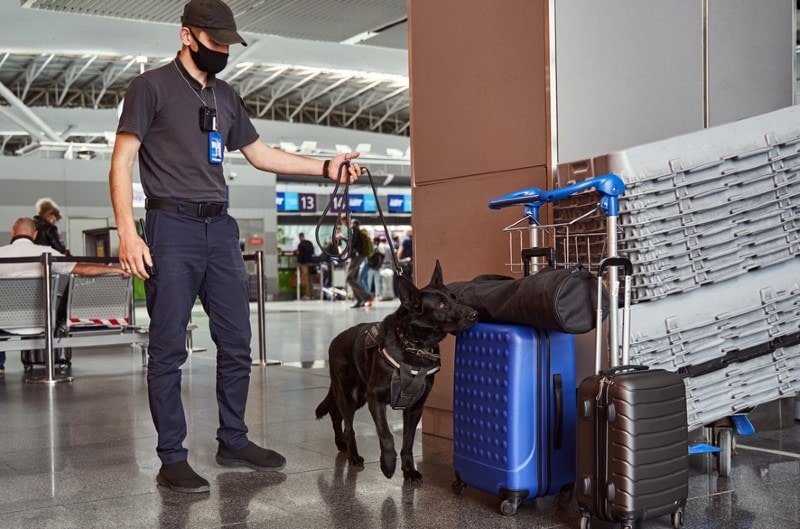
When you think of detection dogs, you likely think of those dogs working with police or military personnel to sniff out bombs and drugs. And you’d be right! However, detection dogs work in many other jobs that require an exceptional sense of smell.
- Sniffing out pests, such as bed bugs
- Detecting illnesses like cancer or wonky blood sugar levels
- Sniffing out truffles
- Protecting art by detecting bugs that can eat away at paper and wood
- Sniffing out hidden electronics, such as thumb drives, to aid police searches
- Detecting tainted molecules in wine
- Sniffing out animal feces, like whale poop
As you can see, detection dogs do many more jobs than you’d imagine!
- Golden Retrievers
- Labrador Retrievers
9. Herding Dogs

You’re probably familiar with herding dogs, at least those that herd animals like cattle and sheep. The dog breeds that work as herding dogs are typically born for the job, meaning the breed is one that has herding in its blood or was specifically bred to be a herding dog.
And while herding dogs work mostly on farms herding farm animals, there are a couple of other animal types they work with, like Canadian geese and even reindeer! Herding dogs also function as guard dogs that protect livestock from threats.
- Australian Shepherds
- Border Collies
- Australian Cattle Dogs
- Icelandic Sheepdogs
10. Hunting Dogs

And finally, we have our! There are five types of hunting dogs, and each does different jobs for the people they’re aiding.
- Retriever dogs (Golden, Chesapeake Bay, Labrador): retrieve birds shot by hunters
- Pointer dogs (Spaniel, Setter, Braques): hunt small game by walking fields; when they find the game they’re seeking, they stop and point at it, hence the name
- Blood-tracking dogs (Basset Hound, Beagle, Portuguese Water Dog): these dogs are used to recover large game that has been injured
- Hound dogs (Walker, Red-bone, Fox Hound): these pups are able to scent and track a variety of game that has been wounded, such as hares, moose, foxes, coyotes, and more; they inform the hunter of where to go via barking
- Flushing dogs (Cocker, Springer): flushing dogs stay close to their hunter and work on flushing out game, such as birds
Final Thoughts
Humans aren’t the only ones keen on working hard; our dogs work just as hard! There are several types of working dogs in the world, and each type has very specific jobs they’re trained to do.
Whether they’re guarding art, sniffing out bombs to help the military, detecting cancer, herding reindeer, or helping out hunters, working dogs do it all!
Featured Image Credit: Natalliaskn, Shutterstock

